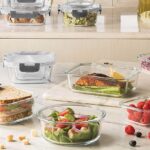Skateboarding is one of the most popular sports among young people, especially teenagers. It gains more and more followers every day. Even though some people consider skateboarding a dangerous sport, wearing the proper safety equipment can help increase your safety while practising it.
Knee Pads

Because skate knee pads have such an essential protective purpose, finding a pair that fits properly is necessary. You should look at the material’s durability and flexibility because these factors influence how quickly the pads will get damaged.
Size and Fit
If your skateboard knee pads do not fit properly, you risk serious injuries. Consider the size and fit while choosing the best skateboard knee and elbow pads for you. Skateboarding pads should be snug enough to stay on your leg when you’re skating. The material should not slip or loosen when moving. Nonetheless, the pads must fit right to be comfortable.
To determine your size, take a soft tape measure and wrap it at the centre of the kneecap around your leg. But you have to do this while standing; otherwise, you’ll get the wrong measurement. If you don’t have a soft tape measure, take a string or a ribbon, measure and transfer the length to a ruler or a hard tape measure. Some companies measure the size by body weight, so you’ll have to adjust according to their way of doing things.
Material

Skateboarding knee pads are made of the same materials regardless of their size or style. One of the most commonly used materials is reinforced foam. The foam acts as a cushion; it absorbs the shock and intensity of impact and lowers your risk of injury. Even if they don’t contain any additional materials, all skating knee pads will have foam undoubtedly.
Another material that’s used is plastic. It’s there to provide more protection and keep the skateboarder moving if they fall. It’s layered over the foam and creates a firm surface that will slide instead of stopping when it touches the ground. This way, you’ll get less impact and pain. Elastic, cotton, and Velcro are among additional minor materials. These are used to keep the pad in place and give the person extra comfort. Almost all pads will combine these materials to keep the pads in place and not chafe the skin.
Straps and Comfort
It can be challenging to find a protective pad that fits perfectly. Even if you do get a set, you may outgrow it quickly. As a result, an adjustable fit is the wiser option. It allows you to grow without buying new knee pads. Different models have different methods for altering the fit. Straps, Velcro, buckles, and clips are all different examples. Choose a process that makes it simple to put on, take off, and alter. An elastic strap, for example, is easy to adjust and keeps the cap in place. Check the number of straps it has at the same time; if the main zones are sufficiently spaced, then the pad will no longer slip off accidentally.
Elbow Pads

We can’t always prevent injuries, but we can at least try to reduce the pain and damage they may cause. Elbow pads are one of the ways to do it, and they will work wonders in some cases. We know that one of the most common injuries in skateboarding is in the arm and elbow zone; choosing the proper elbow pads to keep you safe and secure is very important.
Size and Fit
The size and fit of an elbow pad have a role in its comfort. You can adjust the pads with straps or pull them up like a compression sleeve; it depends on the design. Straps can help you get a better fit, although compression-style guards often feature silicone grips to keep them from moving around on your arm. Your elbow should always rest in the guard comfortably.
It should be comfy but not so tight that you have limited blood circulation. When looking for elbow guards, be careful first to determine your size. Look at the customer reviews to see what they have to say. If you’re in between sizes, the company may advise you to buy a size up or down. To measure the right size, take a soft tape measure as you would do for the knee pads and wrap it around your arm while it’s outstretched in the middle of your elbow. The same string and ruler rule apply here if you don’t have a soft tape measure.
Material

Just as you choose the best materials for your skateboard shoes, this is something you shouldn’t compromise on. It’s wise to invest in high-quality something because it will spend a lot of time on your skin and cause irritation and inflammation if it doesn’t suit you well. It has to be breathable and comfortable and absorb moisture to keep you cool and make you feel dry. Nylon is one of the most commonly used materials because of its durability.
High-density foam is something the pads must-have. It serves as a cushion and a way to keep the other components in place. Softer elbow guards could depend just on padding to provide protection. Look for guards with extra padding or hard plastic casings if you want more protection. Other materials that manufacturers use are versatile polyester and chiffon, known for their breathability.
Price
Because elbow pads are only one of many items of skateboarding safety equipment, you may not want to spend a lot of money on them. Depending on the brand and features, prices can vary a lot. Retailers will also hold sales where knee and elbow pads will be cheaper, so you’ll have the chance to get them at a better price. Don’t go for the more budget-friendly option because that can mean low quality, and you don’t want an elbow pad that will break on the first fall.


